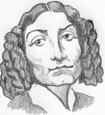Lolaland

Lola Montez, entertainer and adventuress, was born Marie Dolores Eliza Gilbert on this day in 1818(?) in Grange, County Sligo, Ireland.
Strikingly beautiful but with precious little talent, Lola Montez was one of the great self-promoters and most prodigious hedonists of the 19th century, propelling herself not only into theaters, newspapers and bookstalls, but into seats of European power. Although she styled herself as the illegitimate child of Lord Byron, she was actually the free-spirited daughter of an Irish soldier and his child bride, sent to live with friends of her Scottish stepfather after the death of her father when she was 7. At 19, in order to avoid an arranged marriage to a 60-year old judge, she eloped with a British officer in the Indian Army, but found herself abandoned by him in Calcutta.
She returned to England and, because she had been admired for her youthful twirling, she decided to become a dancer. Marketed as a "Spanish" dancer by Lord Malmesbury and Lord Brougham (finally adopting her Spanish moniker), she made the most of her dark beauty, tiny waist and voluptuous figure, but her first performance at Her Majesty’s Theatre in June 1843 was an artistic disaster. Undeterred, Montez toured Europe, where her beauty and reputation kept the houses packed for her performances as she befriended some of the leading literary and society lights. It helped, of course, that she was fluent in several languages, but her sexual adventurousness and outspoken off-stage persona made her fascinating to men of high station.
Despite an appalling performance at the Court Theatre in Munich in October 1846, old Ludwig I of Bavaria became smitten with her when she accosted him afterwards and displayed her glorious bosom to him. She was only too happy to take advantage of the fading king, accepting a palace he designed for her as well as the title of Countess of Landsfield in 1847. Then she began meddling with state affairs as the king’s proxy. When her harassment of the Jesuits and other "liberal" initiatives began to stick in the craw of uber-king Prince Metternich, he offered her $250,000 to leave. When she refused, Metternich undermined her authority by stimulating student riots against her. As the riots grew to the size of a full-fledged rebellion, Ludwig declared that he would never abandon Lola. "My crown for Lola!" he promised, and the students took him up on it, forcing him to abdicate. Lola unceremoniously left Munich on the midnight train, a victim of her own political naiveté; and although Ludwig had lost his throne and his woman, he continued to provide her with an allowance for several years.
Living richly on Ludwig’s largesse, Lola hopped from capital to capital, engaging in notorious love affairs with Nicholas I and Franz Liszt before the cash ran out. She met P.T. Barnum in Paris in 1851, who suggested that he could arrange a tour of the U.S.; unable to conclude negotiations with Barnum, she decided to conquer America on her own, arriving in New York in December. Now exploiting her "celebrity" more than her dancing, she acted in comedies and in a play about her own life which she commissioned, Lola Montez in Bavaria (1852). She moved to San Francisco where she married a newspaper editor and unveiled the dance which became her trademark: the Spider dance. Based on the tarantellas of ballet star Fanny Essler, Lola performed the dance in flesh-colored tights (a scandalous touch for the time) wearing a chiffon skirt covered with tarantula-sized cork spiders, and as she writhed and spun faster and faster, she would flick the spiders off her skirt. The finer audiences were shocked by the eroticism of her performances, but the Barbary Coast gold miners were enthusiastic if poorly paying fans. (It can fairly be said that erotic dance has come along way since Montez’s day.) Brawling fights with her husband over her spendthrift lifestyle -- imported foods, Cuban cigars, pet bears and parrots -- led to Lola Montez’s third and final divorce (she had married briefly in Switzerland after fleeing Bavaria).
By this time her delusions of grandeur were reaching pathological heights: letters from that period revealed her "plans" to capture California, cause it to declare its independence and rename it "Lolaland" with herself as its queen. In 1855 she made one final acting tour, this time in Australia, but exhausted by squabbles with her agents and a disintegrating entourage, she returned to New York and hit the stage as a lecturer before suffering a paralyzing stroke and dying in a boarding house, impoverished, on January 17, 1861 at the age of 42.
Although Montez has figured as a character in numerous films (notably Ken Russell's outrageous Lisztomania, 1975) and Max Ophuls made a film about her in 1955, no film has yet completely captured her excesses.
Labels: Pop Culture, Trailblazing Women





0 Comments:
Post a Comment
Subscribe to Post Comments [Atom]
<< Home